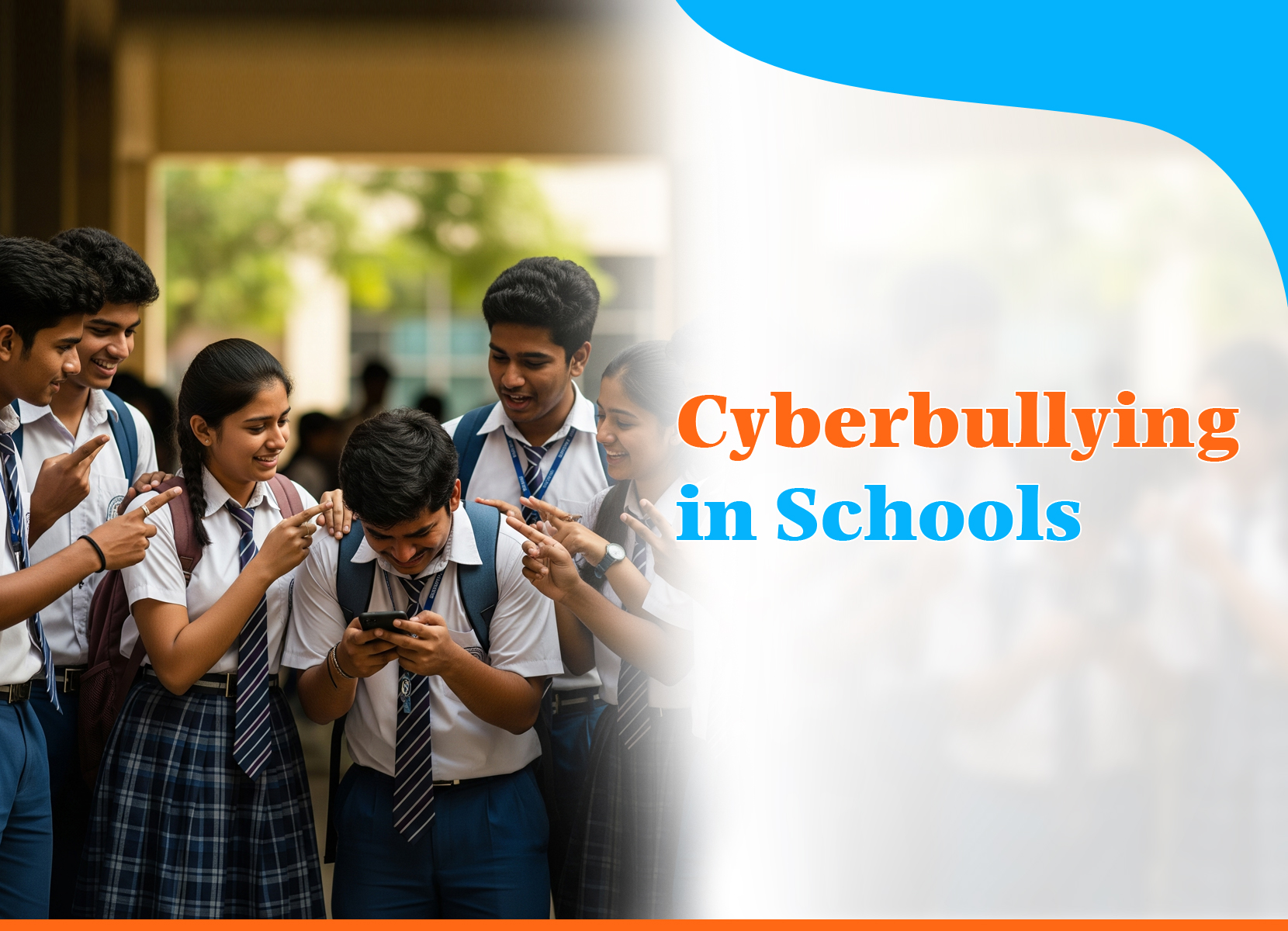Cyberbullying in Schools
It starts with a text. Maybe a meme. A post shared around without your consent. Initially, it feels like a joke but the laughter doesn’t stop, and neither do the messages. For many, this is how cyberbullying in schools begins and it often happens when no one is watching. In schools, bullying isn’t limited to hallways or playgrounds. With more and more technology being integrated into classrooms, exposure has increased multifold. Students are connected within school and out of it too. Cyberbullying slips into group chats, comment sections, online group work and social media feeds. While the classroom ends at 2 p.m., the internet doesn’t.
What is Cyberbullying?
To put it simply, cyberbullying is the use of digital platforms to harass, shame, threaten, or exclude someone. The worst part? cyberbullying in schools can happen anonymously and around the clock. It could be:
- – Spreading rumours online
- – Sharing private pictures without permission
- – Repeated name-calling in gaming chats
- – Creating fake accounts to mock someone
- – Leaving someone out of class WhatsApp groups intentionally
Why Cyberbullying in Schools Hits Students So Hard
For many school going students, staying relevant and social approval matters. When such online spaces become unsafe, they start affecting their sense of identity. A single harsh message can replay in their mind long after logging out from the app.
Some students begin to skip school while others choose to stay silent, scared of making things worse. Slowly, their anxiety builds, focus in class drops and friendships fade. In many cases, impact of cyberbullying on student mental health is huge and leads to long term mental health issues.
How Schools Can Take the Lead
Schools should have a strong school cyberbullying policy although a simple policy alone wouldn’t solve the larger problem at hand. The culture in school matters more. Are the teachers trained to detect drastic or sudden changes in student behaviour? Do students feel safe talking to teachers or friends? Is there a system to report bullying without fear?
Workshops, class discussions, and digital safety lessons should be part of school life not one-time events. When schools treat cyber safety like any other life skill, students begin to take it seriously too.
Even simple changes for cyberbullying in schools help. Anonymous feedback forms. Peer mentorship programs. Including digital citizenship topics in assemblies. These are not big steps but they move schools in the right direction.
The Student’s Role
If you’re a student facing cyberbullying in school, here’s one thing to know first: you are not alone. Thousands of students go through this, but few speak up. Start by talking to someone. Save the messages. Block the sender. Share what’s happening with a teacher or parent. Every student should know how to report cyberbullying in Indian schools.
If you’re a bystander, don’t stay silent. Reach out to the person being targeted. Let them know they have your support. Sometimes, one message of kindness can undo days of cruelty.
Parents and Teachers You Matter More Than You Know
There is a huge role of parents in preventing cyberbullying India. Parents might feel unsure. Should they monitor devices? Should they confront the bully’s family? But the first step is simple: listen. Let your child explain in their own words. Avoid judgment. Offer steady support. Help them navigate how to report the bullying safely.
It is not always easy for teachers to catch these things immediately. Small changes can be made like checking in with quiet students or noticing sudden behaviour shifts. Schools can provide teachers with resources for cyberbullying prevention, giving them tools to respond with care and confidence. CBSE and NCERT have released several resources for teachers, students and parents on Cyber bullying, cyber safety and security.
India’s cyberbullying laws for schools are still developing. Some sections of the IT Act apply and CBSE also encourages schools to act promptly on digital harassment. Although, the real change happens at the ground level in classrooms, staff rooms, and at home.
Cyberbullying in schools is not just a tech issue, it’s a human issue. One that demands attention, empathy, and action. The more we talk about it, the easier it becomes to stop it before it harms. Because every student deserves to feel safe not just in school, but online too.

